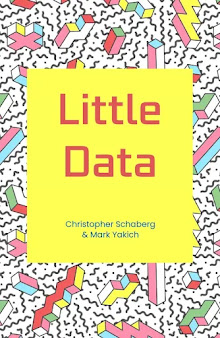One thinks of Roland Barthes's concept of the 'scriptor' who is "is born simultaneously with the text" and who "traces a field without origin"—this is sort of what it feels like to compose a blog post (even if it is a fantasy). And so, perhaps we'll read "The Death of the Author" and From Work to Text in the class—which makes me wonder: will reading Barthes be different on an e-reader than on this screen in front of me now? I suppose, thinking about it, that my head won't be hanging from my neck at this awkward angle, because I'll be lying back, instead of sitting up.
Nicholson Baker has proven to be an excellent phenomenologist of e-reading. I appreciate how Baker accounts for what it feels like to read electronically; we do not have nearly enough critical reflection on this subject. In his New Yorker piece on the Kindle, he describes one serious advantage of reading Kindle books on an iPod Touch: night reading. As Baker explains:
...when you wake up at 3 A.M. and you need big, sad, well-placed words to tumble slowly into the basin of your mind, and you don’t want to wake up the person who’s in bed with you, you can reach under the pillow and find Apple’s smooth machine and click it on. It’s completely silent. Hold it a few inches from your face, with the words enlarged and the screen’s brightness slider bar slid to its lowest setting, and read for ten or fifteen minutes. Each time you need to turn the page, just move your thumb over it, as if you were getting ready to deal a card; when you do, the page will slide out of the way, and a new one will appear. After a while, your thoughts will drift off to the unused siding where the old tall weeds are, and the string of curving words will toot a mournful toot and pull ahead. You will roll to a stop. A moment later, you’ll wake and discover that you’re still holding the machine but it has turned itself off. Slide it back under the pillow. Sleep.
Indeed, there is something utopian about the promises of e-reading. Look at how Sony figured it in an early ad, circa 2005:

I wrote about this magazine advertisement in my dissertation, because it was such a peculiar wish image: an utterly empty airport; a Boeing 747-400 devoid of any livery; carpet that looks almost grass-like, this ambience accentuated by the construction-site T-bar post in the ground, atop of which is the invitation to read. The ad then (reflexively) reads: "Pick a nice spot for your library." Ah, what a nice way to think of the airport: as a library. I have been in a few quiet airports, and it is a quite nice experience. Most of the time, however, airports are loud and anything but library-like. Often in airports it seems as though I am thinking in CNN—then, I realize it is just the inescapable TVs blaring above my head. Tip: Minneapolis has a tranquil, TV-free observation room accessible at the joint of—I think—the D and F concourses.
But back to the Sony ad. In this picture, the airport serves as a place where one will necessarily have the time to read, but the airport has also been somewhat deemphasized by the act of reading: the airport is emptied out by the superimposition of a library onto the departure lounge. This context shift justifies the ghostly emptiness of the airport, and might even explain the lack of a signifying airline icon on the aircraft in the background (the only mark, which is more of a phatic ‘re-mark’, is an obscured tail number)—the airplane is a blank page, of sorts. Reading has evacuated presence from the airport, even as the presence of the airport has allowed reading to happen—airport reading is thus rendered chiasmatic, as a thing to do while waiting to fly, and as a thing to do instead of flying, to defer flight...in principle, a deferment that can be drawn out as one can "read more" on the Sony Reader. Just keep reading—you won't notice your flight, much less see the fields below, or even remember where you came from.
This is the circular dream of e-reading: it promises to be seamlessly available to nearly every moment of everyday life. But at what point does an everyday life of e-reading cease to be desirable? When everyday pilots are so caught up in their screens (Off-Course Pilots Cite Computer Distraction) that their plane flies undeterred for 150 miles beyond its destination, might we rightly ask, like children, are we there yet?













